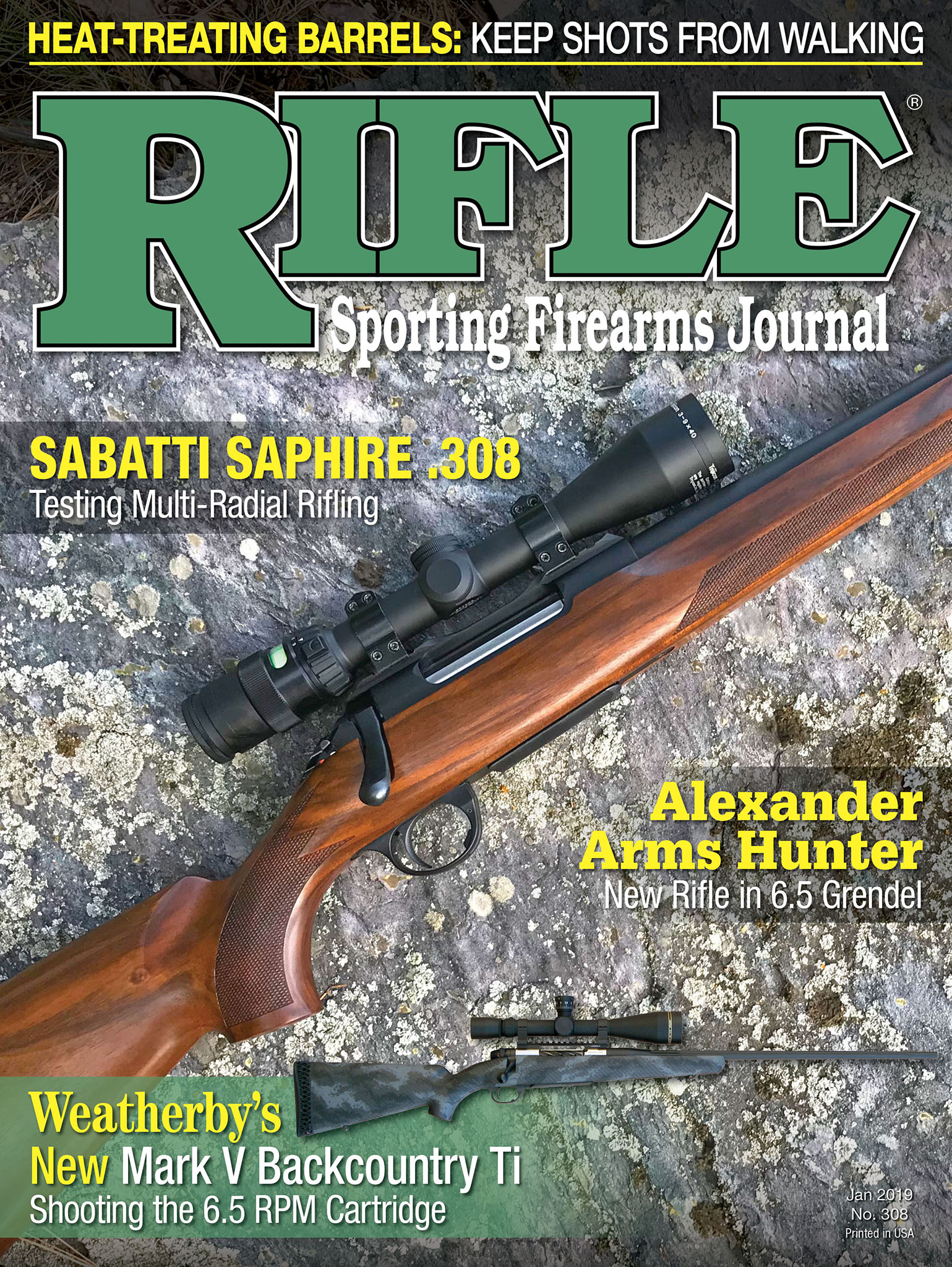A Rifleman's Optics
Bushnell Forge 2.5-15x 50mm
column By: John Haviland | March, 20
Bushnell has included a host of features in its three new Forge scopes and offers several reticles to fit every shooting need. Forge scopes include a 3-18x 50mm, 4.5-27x 50mm and 2.5-15x 50mm.
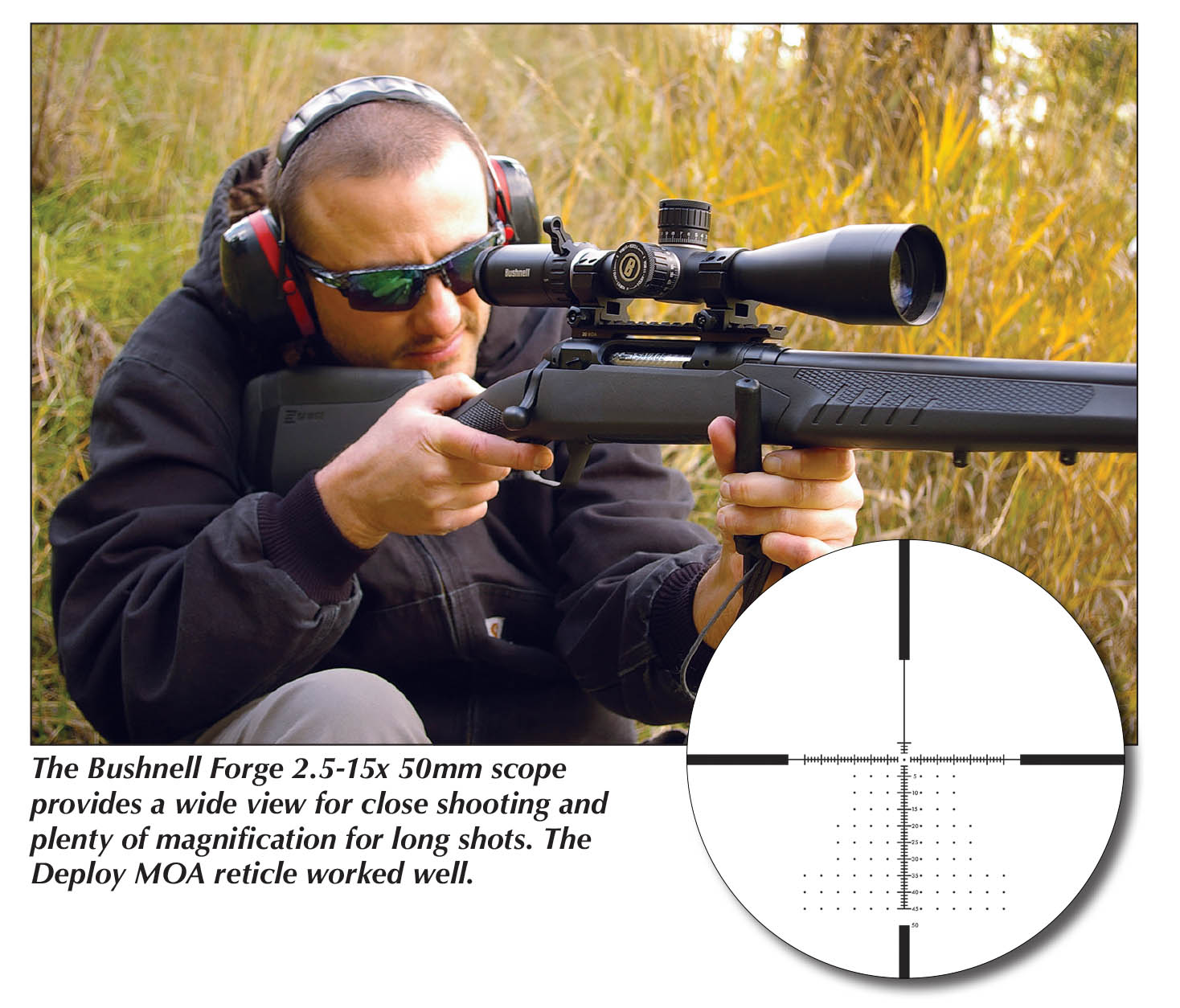
Bushnell says its High Definition Optical System is a balance of lenses, coatings and construction that provides good resolution and contrast in all environments. Bushnell has always been big on lens coatings, and all lenses in Forge scopes are fully multi-coated with the company’s Ultra Wide Band Coating that provides brightness and true color in every lighting condition. Exterior lens surfaces are coated with EXO Barrier coating technology that molecularly bonds to the lens and fills the microscopic pores in the glass, resulting in a slick shell that will not fade over time and repels water, oil, fog, dust and about everything else except bad luck. To quickly use these features, Forge scopes contain a side parallax correction dial with yardage numbers toward the eye, and a fast focus eyepiece.
I’ve used a Forge 2.5-15x 50mm clamped on a Savage Prairie Hunter rifle chambered in .224 Valkyrie for the last few months. During that time the rifle has fired at least 400 rounds and the scope’s reticle has never wandered. A 2.5-inch sunshade comes with the Forge, but even when shooting during bright days it wasn’t really needed. One afternoon sunlight shined on the objective lens, but targets were in the shade 100 yards away. The strong light did not produce any flare in the scope and the .5-inch wide aiming squares appeared clear.
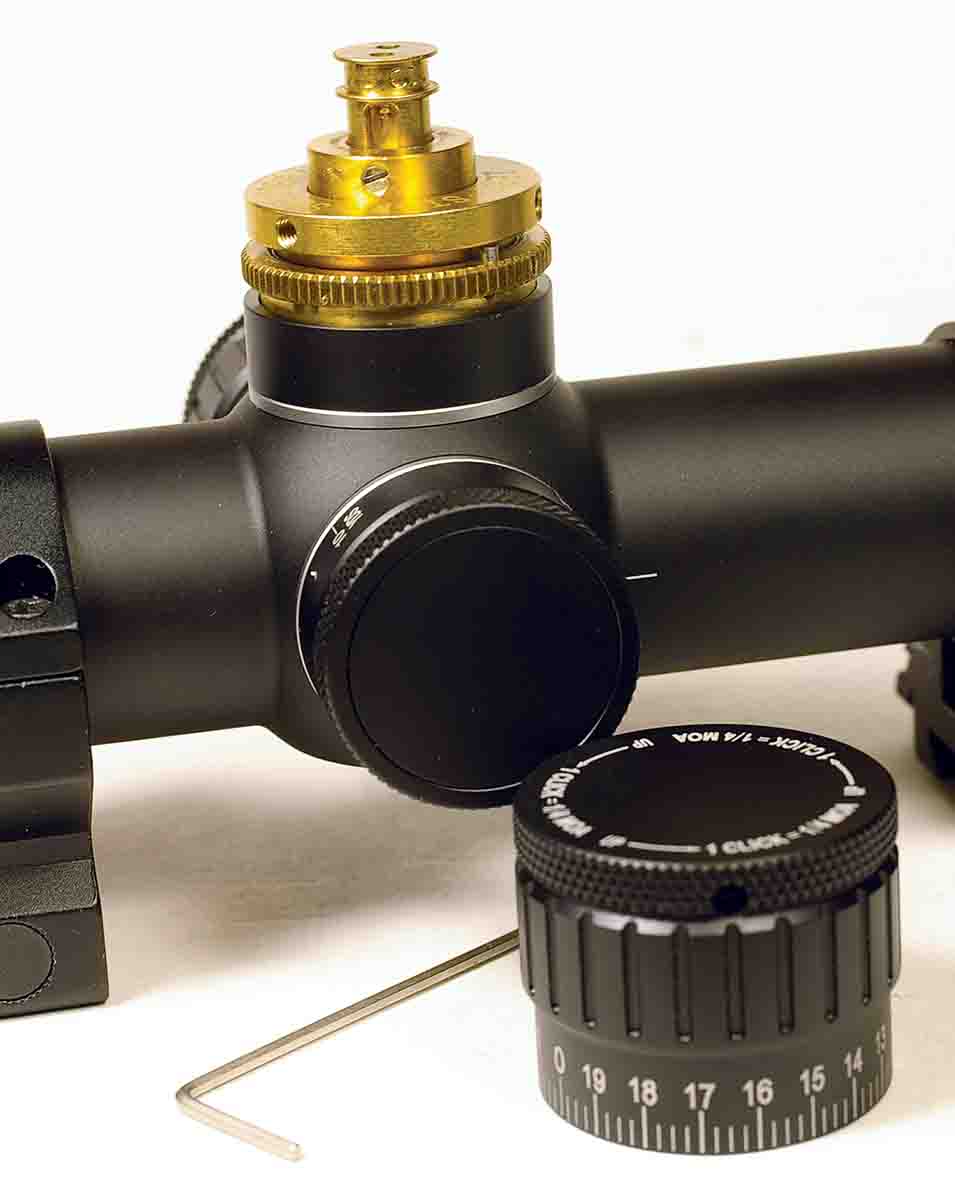
Forge reticle choices include the Deploy MOA (minute of angle) positioned in the first or second focal plane and a Mil (millradian) reticle in the first focal plane. Each click of the turrets represent .25 MOA or .1 Mil. A fine dot in the center of the reticle is used for aiming right on a target. The MOA reticle crosshairs are .20 MOA thick and hash marks are 2 MOA wide and spaced 1 MOA apart on the lower vertical and horizontal wires.
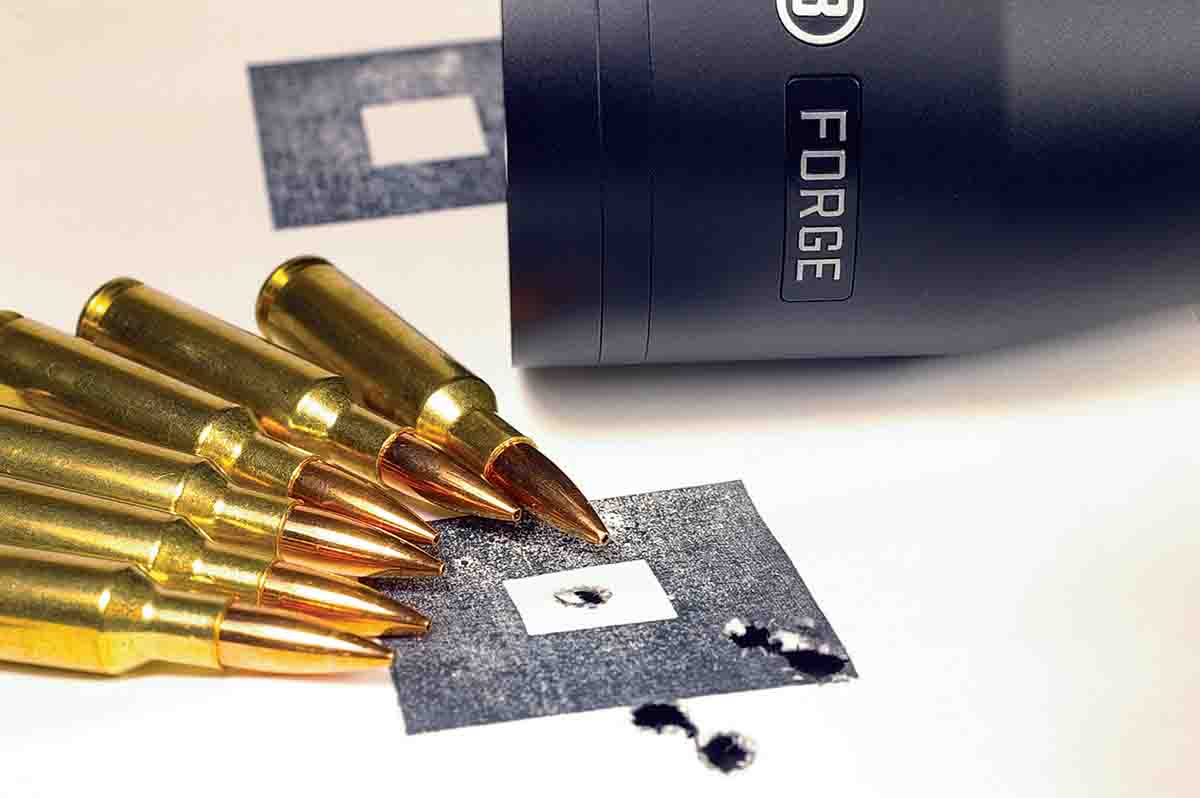
Every fifth hash mark is numbered on the lower wire. Windage hold-off dots in a Christmas tree-shaped pattern on the lower half of the view are spaced 5 MOA apart. The Mil reticle contains similar hash marks, but in .5 Mil spacing. The Deploy MOA reticle placed in the second focal plane has a much simpler pattern with unnumbered 2-MOA spacing. The scope must be set on 15 power for correct spacing.
The Forge 2.5-15x 50mm I’ve been using is set up with the MOA reticle in the first focal plane, so spacing remains constant at all magnifications. Bushnell loosely labels this Forge as a deer hunting scope. However, with magnification set at 5 power and lower, the reticle’s lines appear very fine and spacing and numbers are indistinguishable from each other, and the reticle became difficult for me to see against a background of brush.
One of the most accurate handloads the Savage .224 Valkyrie rifle shot included Berger 77-grain Boat Tail Target bullets paired with 28.5 grains of Reloder 17 at a velocity of 2,888 fps from the 22-inch barrel. Several five-shot groups averaged a touch over .90 inch at 100 yards.
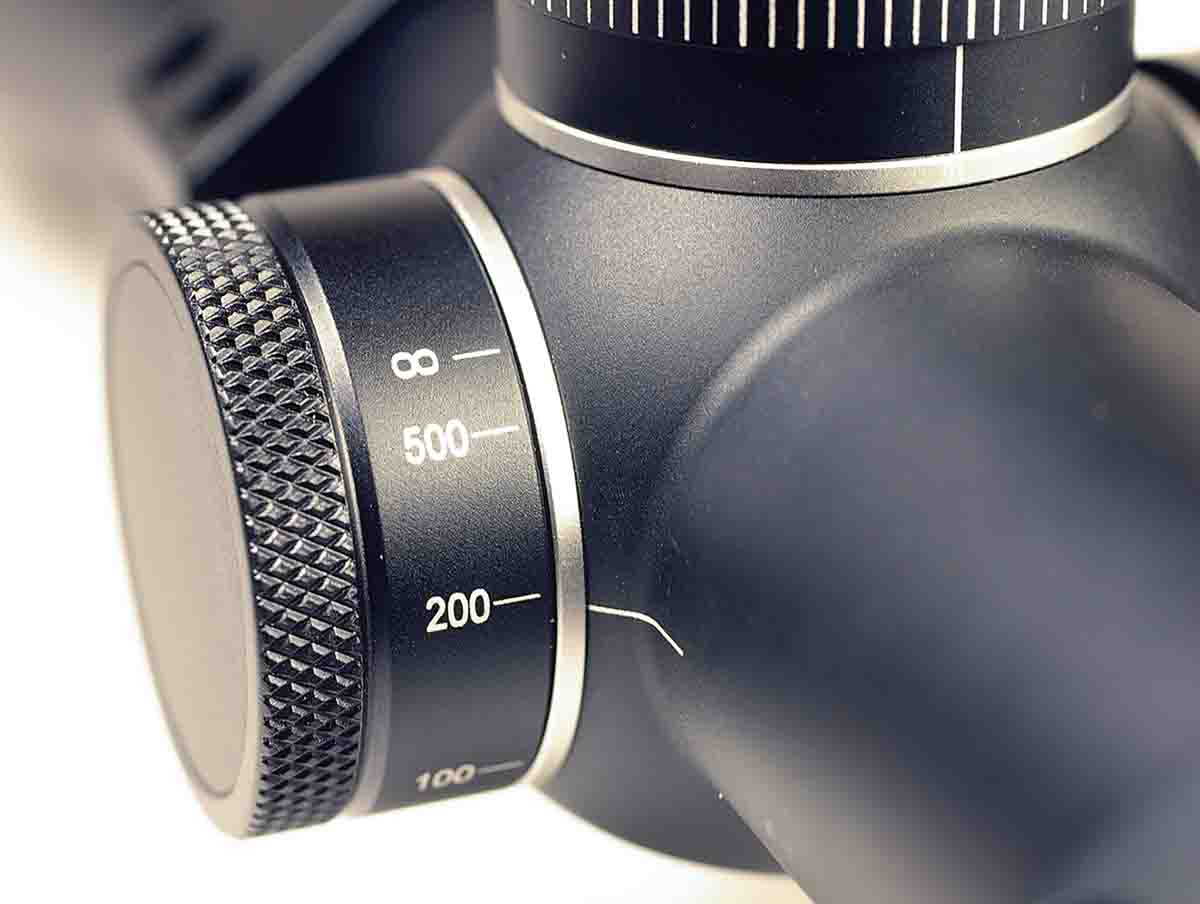
A few shots and clicks of the elevation and windage turrets zeroed the reticle on a target at 100 yards. To easily return to that setting required setting the scope’s zero stop by loosening three set screws on the elevation turret cover and pulling off the cover to expose the brass Z-Lok ring.
Loosening three screws on the ring allows it to drop down, and the ring can then be turned clockwise until it stops against a pin. Retightening the screws sets the zero stop. Replacing the turret cover, with its “0” aligned with the index mark, completed the process. After the Forge was sighted in at 100 yards and the zero stop was set, 19 MOA of upward adjustment remained on the elevation turret. That was enough to put the Berger bullet’s impact on aim out to 750 yards. Some scopes that incorporate a zero stop permit turning their elevation turret five or so clicks below zero. That allows aiming on a target at shorter distances, but it’s only needed when a scope is zeroed at a longer distance of 300 yards or so.
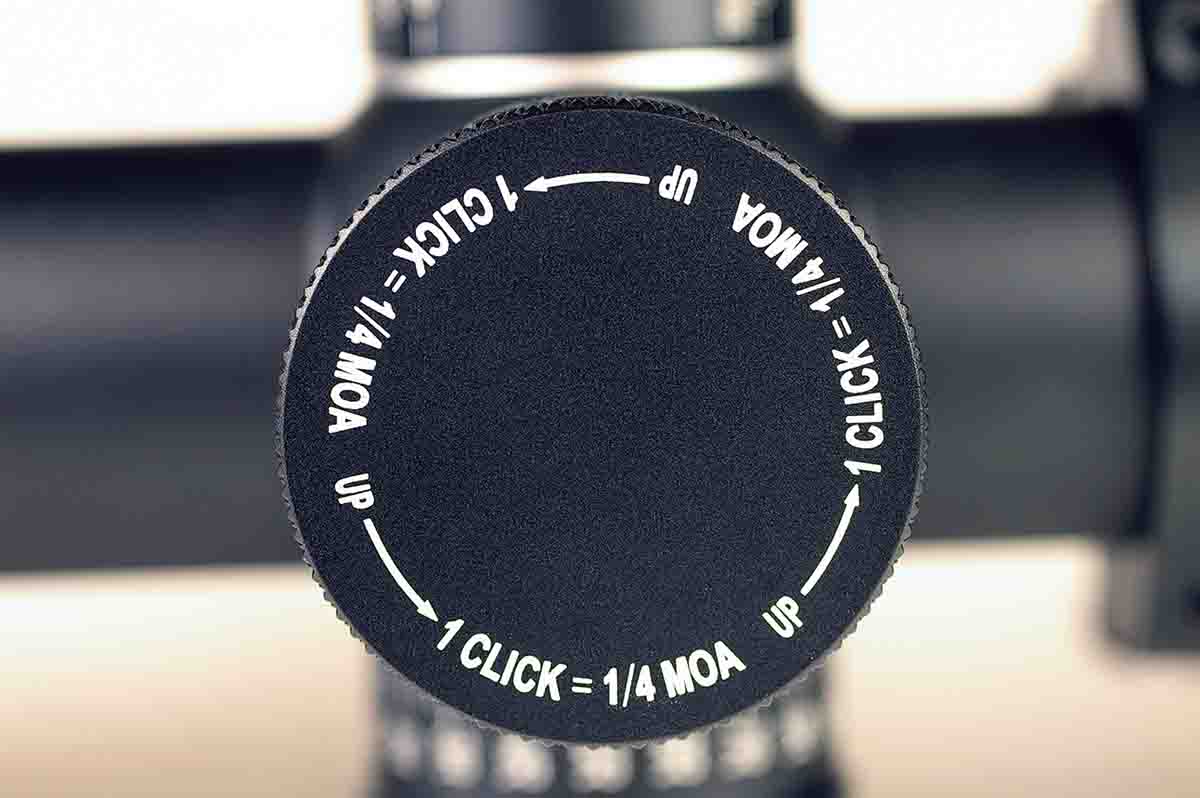
To determine bullet drop at 300 yards I could have consulted a ballistic program or actually shot at that distance. Shooting showed the Berger bullets dropped 13 inches below aim at 300 yards. I dialed up the elevation turret to compensate for that amount of drop and fired a shot. With the turret turned back to its zero stop, another shot was fired at the 100-yard target and the process repeated for five more shots at each distance. Before each shot I adjusted the parallax dial for the proper distance. The dial is marked “100” “200” and “500,” so for the 300-yard shots I slowly turned the dial back and forth until the view was sharp.
Six bullets fired at 100 yards formed a 1.10-inch group, with five bullets clustering in .65 inch. Vertical spread was the same 1.10 inches. The first bullet fired hit the center of the target, but the next five hit a half an inch lower.
Six bullets formed a 3.48-inch group at 300 yards. One bullet hit a couple of inches to the right of the target, which could have been caused by a stutter on the trigger. Vertical spread of the bullets was 2.13 inches.
That shooting showed the Forge elevation reticle adjustments are precise. A lift of the turret and positive clicks provide plenty of adjustment, and pushing down on the turret locks the setting. Of course, the reticle’s hash marks provide quick correction for distance and wind.
The China-made Forge retails for $750 and is guaranteed for 30 years.


